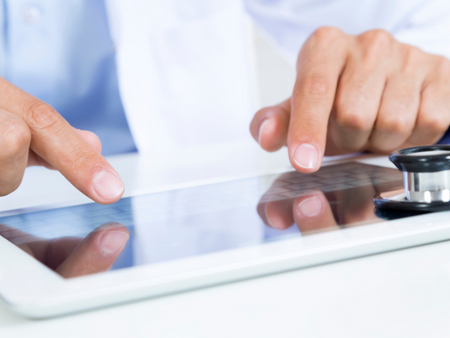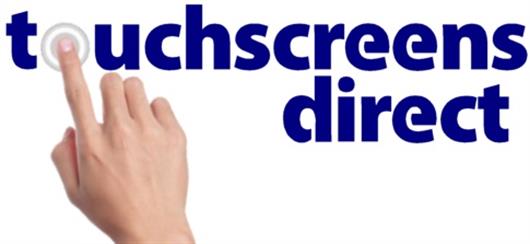 Add My Company
Add My Company

The healthcare industry, be it hospitals, clinics, or other medical facilities, strive to work as seamlessly as possible, almost like a well-oiled machine. Multiple departments work in harmony to ensure optimum efficiency. One simple mistake can compromise the entire system and cost a patient’s life.
However, with the ever-increasing demand and pressure on nurses and care providers, streamlining processes has become an increasingly crucial aspect of any medical facility.
With advanced healthcare technology, such as touchscreen monitors, healthcare professionals can deliver the highest quality of care while reducing the loss of human life.
Let’s take a closer look at how incorporating touchscreen monitors can help optimise workflow in the medical industry.
Why Using A Touch Monitor In The Medical Matters
Every element of the healthcare industry, from practitioners and registered nurses to medical, is interconnected — but that doesn’t always reflect in the processes.
This brings in a big risk of human error, which could put endless lives at risk. Fortunately, there are ways to combat this.
We could use tech to record every step of a patient’s medical journey to give them history-backed treatments whenever they visit. However, many physicians fear it could depersonalise healthcare, as it could require extensive documentation that may encroach upon the time they spend interacting and connecting with the patient.
Technology also has other downsides, the most urgent being data breaches, which, while it’s a fair concern, is rather rare.
When used right, as with touchscreen monitors, tech can help create a foolproof system that delivers efficient healthcare. From assisting patients to finding the right physician’s office and administering the correct dose at the right time to coordinating large teams for EDs, there’s a world of good that touchscreen monitors can do to optimise workflow and increase patient satisfaction.
How Touch Screen Monitors Optimise Workflow
Touch screen monitors have been a game changer in the medical industry. They help deliver outstanding healthcare services without adding more employees to the roster.
So, if you’re looking to optimise your workflow without exceeding your budget, here are some of the primary reasons why you need to invest in this tech.
Better Wayfinding
Problems in wayfinding cost the NHS a whopping £216 million.
Integrating touchscreen technology at the entrance can help address this. It could offer guidance to overwhelmed patients and can also help those with additional needs to navigate the hospital with ease.
Here’s how wayfinding can prove to be helpful:
-
It can help overcome language barriers by allowing patients to select the language they’re most familiar with.
-
It can help the illiterate communicate with symbols and graphics.
-
It can offer flexibility in use, allowing those with impaired eyesight to increase the font size or adjust brightness as needed. It also pairs well with text-to-speech technology for greater convenience.
-
It can allow those with hearing loss to access information in a visual format.
Touch screen monitors can be further configured and even placed on adjustable mounts, so even patients on wheelchairs can angle or tilt it to view the screen — and its contents — without challenging their physical abilities.
Ensure Accurate Information Transfer
Many professionals are involved in the care process of one patient. But with a vast amount of patients visiting hospitals every day, errors are to be expected during the transfer of information. Lost documents and orders may seem like a slight oversight, but it could result in heightened in-hospital mortality rates.
Digitising this process with a touchscreen monitor could help control this.
A touchscreen monitor will allow professionals to pull up records and access all important medical information at a glance. They can then immediately transfer any updates in treatment between teams via a centric-based system. With no contrariness at play, providers can bypass inevitable errors in patient information to ensure consistency and accuracy in ongoing treatment.
Minimise the Risk of Mistakes in Diagnosis
Diagnosing patients goes beyond point-of-care tests; they also include medical history and patient lifestyle.
And integrating touchscreen monitors into healthcare technology can allow medical professionals to make informed decisions backed by big data analysis. It will ensure a more accurate diagnosis and provide support for intervention treatments.
Reliable Data Storage
Healthcare can feel invasive to patients who require privacy when they have to share embarrassing or sensitive health issues. A touchscreen monitor can help with this as it can remove humans from the equation to make the patient more comfortable.
Plus, it can be protected with a password or PIN code and doesn’t have add-ons like a keyboard and mouse, which are vulnerable to phishing attacks. It will keep the patient’s information secure, with only those handling the patient’s treatment having access to this information.
Moreover, as everything is saved on the cloud, patients won’t have to narrate their history whenever a new member is assigned to their medical team.
Simplify Patient Care
Most hospitals have a limited number of medical professionals available on-call while seeing a record number of patients every day. Medical institutions are not equipped to handle this workforce burden.
To make things easier for medical professionals and patients, hospitals can use touchscreen kiosks,.
It can also be used to gather information in advance. And, as is the case with Elo I-Series 2 for Windows, it can function as a POS (point of sale) system, allowing patients to make payment for services rendered when they’re not carrying cash.
Speed Up Processes with Next-Level Accessibility
Smart solutions like touchscreen displays can upgrade hospital workflow seamlessly.
They give access to information on the go and allow medical personnel to input medical history from patients’ rooms. This medical information can then be accessed by professionals all over the hospital — and without inconsistencies brought on by possible staff changes.
The ability to control just about every aspect of the patient’s treatment at the click of a finger ensures everything works smoothly, helping save lives.
How Can Elo Touchscreen Monitors Optimise Workflow
Elo touchscreen monitors are a versatile solution that can help address various concerns and requirements.
This widescreen monitor helps decision-makers pull up information about the patient to access and highlight areas of concern and collaborate with other professionals to find the right course of treatment. It can also be used to share relevant information with the patient to keep them informed about their treatment.
Furthermore, Elo Touchscreen solutions can simplify check-in, obtain digital signatures, and update pharmacies on prescriptions, among other things, to enhance patient experience and free up time for clinicians to look after more patients.
In Conclusion
Touch screen technology is the future of healthcare — and you have the power to make it your present. From clear communication to precise documentation, it can make the workflow seamless for everyone involved, including staff, nurses, clinicians, and patients.
The technology is easy to master, and with how much it helps you save, the cost of implementing it will return manifold over the long term!
For more information on The Advantages of Using a Touch Monitor in the Medical Industry talk to Touchscreens Direct
